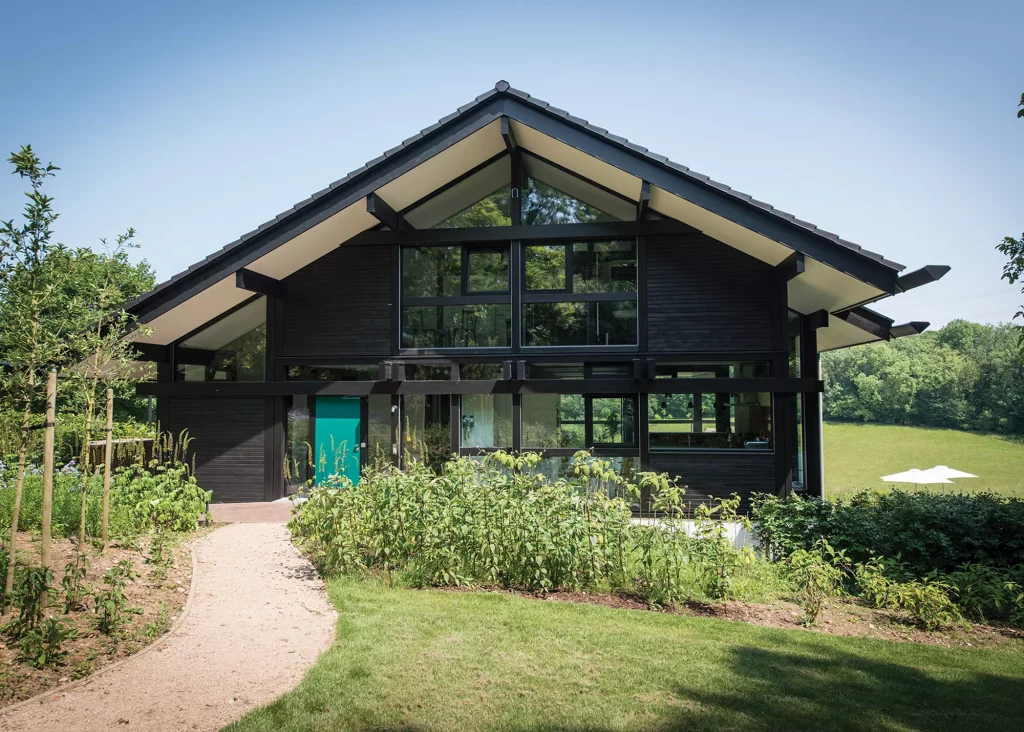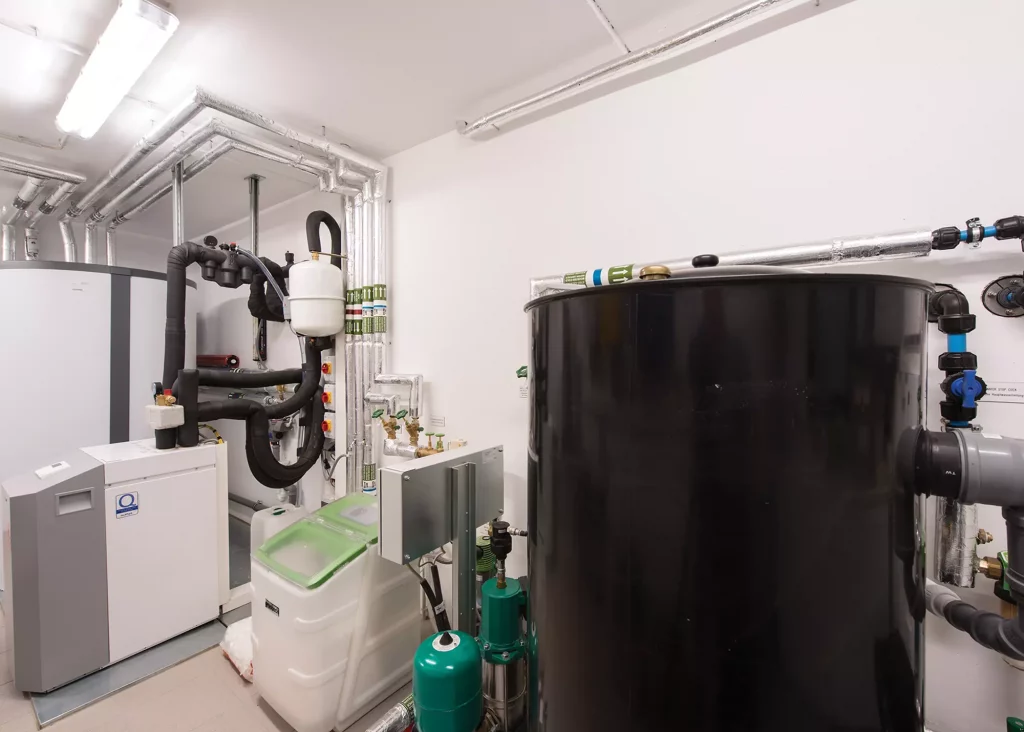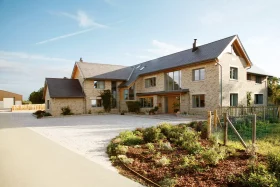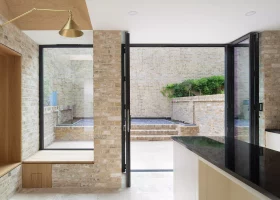
9th & 10th September, Westpoint Arena, Exeter. 100s of suppliers, seminars, expert advice. Explore all the options, all in one place – only at Build It Live.
Book your free tickets now
9th & 10th September, Westpoint Arena, Exeter. 100s of suppliers, seminars, expert advice. Explore all the options, all in one place – only at Build It Live.
Book your free tickets nowIf you’re planning a self-build, renovation or extension, chances are that energy bills and home efficiency will be at the top of your design priorities. With utility bills on the rise, everyone is looking for new and inventive ways to save money.
From simple DIY projects to stop draughts, through to fitting high performance windows and making the most of renewable energy, there are lots of options to create an energy efficient home. These measures will help to keep your bills as low as possible, and there are energy-saving options suitable for all budgets and projects.
Whether you’re building from scratch or working on an existing property, here are 12 ways to minimise the need for heating and grid energy in your house.
Draughty old windows and doors, or low-quality products, could compromise your building’s thermal envelope.
Heat can pass through glass more easily than a solid wall, but even if you’ve got double or triple glazing, poor installation could mean cold spots are making spaces feel chilly. Getting products with proven high performance will help to keep your rooms airtight all year round.
When buying new windows and doors, look at the product’s U-value – a measurement of heat loss. The smaller the number, the better performance.
Windows and doors on new builds must have a U-value of 1.6 W/m2K to meet the Building Regs. For existing homes, new products need to be 1.4 W/m2K, but you can go much lower.
For Passivhaus standard, for example, you need to meet 0.8 W/m2K. But remember that products will only perform as expected if they’re installed properly.

Doors and windows can be a weak spot for letting heat leak out and cold draughts in, so opt for a high performing product with low U-values, such as a new front door from Urban Front
Read More: Glass Types Explained: Triple Glazing, Low-e, Safety Glass & More
The sun is a natural and free source of heat readily available to use. Solar gain is when warmth from the sun permeates through the fabric of a building and heats your rooms – something you’re sure to have witnessed when sun shines through a window on a hot day.
And because the height of the sun in the sky changes through the seasons, you can make use of this free heating during colder months and keep unwanted warmth out in the summer.
This is usually achieved by combining south-facing glazing with a shading mechanism (such as a roof overhang or brise soleil) to keep direct light out when the sun is high in the sky during hotter weather.
Solar panels on your roof are another excellent way to utilise the sun’s natural heat. Solar thermal will heat your hot water and solar PV will generate electricity.

Nicola and Chris Pelmear’s home benefits from a host of clever eco features. Shown here are their solar PV panels and movable external shutters, which stop sunlight from overheating the inside
Read More: Complete Guide to Home Solar Electricity
Making sure the walls, floors and roof of your property don’t release precious warmth is key to ensuring the fuel you pump into your central heating system isn’t going to waste.
If you’re working on an older building, retrofitting insulation could help to create a warmer and more comfortable environment.
There’s wall insulation (external, internal or cavity), suspended floor insulation and loft insulation to consider – but upgrading every part of your home would be a major and expensive job, plus you’ve got ventilation to consider.
New homes must meet the insulation standards set out in Building Regs (which have recently been updated to ensure even higher energy efficiency targets) but many self builders aim above the recommended levels to create ultra-high performing buildings.
Homes of the past were often built with small rooms, one reason being that this helped to warm rooms quickly and cool them easily.
So, while open-plan living is great for creating a social environment, heating a larger area is likely to take longer compared to a compact room.
If you’re in a new highly insulated and airtight house that benefits from solar gain and underfloor heating, then perhaps large spaces aren’t an issue. But if you’re thinking about knocking through walls in your period home, consider how this will impact both your heating system and subsequent energy bills.
Having a good level of airtightness in your building’s envelope is important for creating a house that doesn’t need much heat to reach a comfortable temperature.
Controlling how much air is escaping is about focusing on the smaller details. It occurs mainly at the junctions between different elements of the building and particularly between materials.
Open chimneys or ventilation bricks are of course free air passages to the exterior. Leakage can also occur through penetrations in the building fabric, such as from services like drainage pipes and cables.
While airtightness is important for retaining heat, we all need fresh air to breathe. Mechanical ventilation and heat recovery systems create pathways for ventilation, helping to push unwanted toxins and odours outside, whilst not allowing any valuable heat to escape.


Whilst on the topic of airtightness, there are many easy ways to eliminate draughts in your home, helping to retain any heat you’re paying for.
Stopping that unpleasant phenomenon of a cold rush of air will help you to feel warmer this winter. Doors and windows are designed to be opened, so there are potential weak spots around the frame edges.
Make sure keyholes and letterboxes are properly sealed, too – it’s easy and cheap to do this job DIY, as is adding draught strips around doors.
If you’re upgrading your windows and doors, choose high-quality products with efficient weather seals to stop unwelcome cold air from getting inside when shut.
Keeping doors shut, fitting a chimney draught excluder, having heavyweight curtains and placing cushioned draught excluders at the bottom of doors will all help. But having a thermally efficient and airtight home in the first place is your best bet for getting rid of cold spots.
Don’t forget that you need fuel to heat the water for showers, baths, kitchen sinks and appliances, so using less will reduce your water and heating bills. Could you change habits for how and when you use hot water in your home and make a saving?
According to the Energy Saving Trust, 12% of a typical gas heated household’s energy bill is from producing hot water, which also makes up about 4% of the UK’s total carbon dioxide emissions.
The organisation’s research suggests that if every household in the UK took just one minute off one shower every day, it would save £215 million in energy bills a year nationwide.
Another option is investing in home water recycling products. Rainwater harvesting does exactly what it says on the tin, collecting water from your roof and filtering it for things like toilet flushing and running the washing machine. Greywater reuse means recycling water from sinks, baths, showers and washing machines for use in your garden.
Read More: Water Efficient Homes: How to Save Water
If you’ve got an old boiler powering your central heating system, chances are that it’s not very energy efficient and could be costing you much more to run than a new boiler would.
The latest boilers are condensing, meaning heat is recovered from the exhaust flue gas and used for the central heating water.
You might have heard about the UK government’s Boiler Upgrade Scheme. This provides grants towards the cost of installing three kinds of renewable technologies (air source heat pumps, ground source heat pumps and biomass boilers).
Nowadays there’s a whole host of home technology available that reduces reliance on fossil fuels and help to lower your heating and electricity costs.
You just need to weigh up whether the price of the product will pay back on bill savings. Air source heat pumps, ground source heat pumps, solar thermal, solar PV, biomass boilers and wood stoves are all great options.
Read More: Air Source Heat Pumps Explained

NIBE’s F2040 air source heat pump is able to work at outdoor temperatures as low as -20°C
Integrating your central heating, hot water system and lighting within a smart home setup means you can accurately time things to come on for when you need them, manage temperatures, keep an eye on usage and make sure everything is turned off when you’re not home.
Smart thermostats are becoming commonplace in our homes. Some designs allow you to zone parts of your property, so that you’re only heating the rooms that need to be.
This means you’re not wasting fuel on spaces where no one will be, such as the guest bedroom.
Whole-house smart systems can tie functionality together and even learn your habits to heat your home more efficiently.
Read More: How Smart Heating Can Save you Money
It might sound obvious, but simple changes such as turning your heating down by just one degree will make a difference.
There’s lots of advice out there now that suggests heating yourself rather than the room, as these small differences can add up to a great saving. This winter we’re all going to be much more conscious of putting on another layer rather than turning up the heating.

The WundaSmart thermostat allows you to zone your home’s heating system and only warm the rooms that you use
Carpets don’t get cold in the way hard surfaces, such as stone flooring, do – unless you have underfloor heating. The sensation of getting a chill underfoot when you come down for your breakfast could make you head for the thermostat.
While doing this every so often might not make a huge difference to your bills, it’s a lesson in how material choice will impact on how comfortable you find your home.

